Read Our
Winery Blog
Blog
This is your blog page, add intro text before through the content management tools or add blog posts through the blogging tools:
Sonoma County Harvest Fair 2022 Results just in
 Ektimo Strikes Gold !!
Ektimo Strikes Gold !!
Just in from the Sonoma County Harvest Fair, they like us..... they really really like us !!!! The Harvest Fair is like the Sonoma County oscars for wine, and we are proud that our small family operation was so well received. Our thanks to the judges, and everyone else that loves our wines. Cheers !
Gold Pinot Noir Russian River Valley Estate 2020 $34.00
Gold Pinot Noir Dijon Clone 115 Russian River Valley Estate 2020 $38.00
Double Gold Pinot Noir Mt. Eden Clone Russian River Valley Estate 2020 $50.00
Gold Pinot Noir Wadenswil Clone Russian River Valley Estate 2020 $38.00
Double Gold Rosé of Pinot Noir Russian River Valley Estate 2021 $28.00
The Wine Club
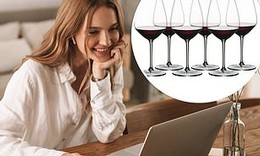 Wine Clubs... most commercial wineries now have one, and they offer a great way to get direct access to your favorite wines. Each is somewhat unique in structure and how they operate, but all are one of the most important connections between the winery and the consumer. It opens a portal with access to exclusive limited production wines and special offers.
Wine Clubs... most commercial wineries now have one, and they offer a great way to get direct access to your favorite wines. Each is somewhat unique in structure and how they operate, but all are one of the most important connections between the winery and the consumer. It opens a portal with access to exclusive limited production wines and special offers.
In its most rudimentary form, a wine club is a subscription service. By signing up to a wine club, you are striking an agreement to receive wines on a regular basis from your preferred producer, and in return you will enjoy certain priviliges for your loyal support. One such benefit, is at least 20% off on your wine purchases, and special discount opportunities that are tailored specifically to club members. You will also receive access to the most limited production wines on a first come first served basis, with special selections sometimes being as little at 25 cases (one barrel) of something truly unique.
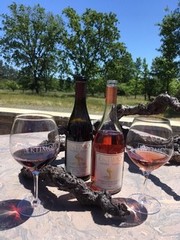 At Ektimo winery, there are multiple levels of club membership to choose from, with the same benefits extended to all members. Entry level is at 2 bottles every three months, processing in February, May, August and November. There is a choice of either Reds and Whites, or Red wines only. There is also the choice of picking up the wine in person from the winery and avoiding any shipping charges, or having the wines shipped where the wine packages will be fulfilled by a third party (shipping charged at cost) and delivered to your doorstep where a signature will be required to receive the wines.
At Ektimo winery, there are multiple levels of club membership to choose from, with the same benefits extended to all members. Entry level is at 2 bottles every three months, processing in February, May, August and November. There is a choice of either Reds and Whites, or Red wines only. There is also the choice of picking up the wine in person from the winery and avoiding any shipping charges, or having the wines shipped where the wine packages will be fulfilled by a third party (shipping charged at cost) and delivered to your doorstep where a signature will be required to receive the wines. 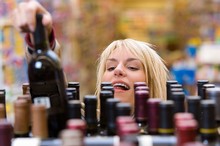 If 2 bottles every three months will not satisfy your thirst, you can choose 4 bottles, 6 bottles, 12 bottles or more depending on your preference, you are only limited by your preference.
If 2 bottles every three months will not satisfy your thirst, you can choose 4 bottles, 6 bottles, 12 bottles or more depending on your preference, you are only limited by your preference.
An alternate level created specifically with particular states in mind, where the extreme heat of summer or the harsh cold of winter may cause delivery problems, we offer a bi-annual club at 6 bottles, 9 bottles or 12 bottles twice a year shipped in the generally most temperate months of April and October.
One not so common option that we offer at Ektimo, is that as a member you can customize your club packages, and configure them to your specific preference at any time. So if you find that one particular wine strikes your fancy, as long as you request it, that can be your club allocation.
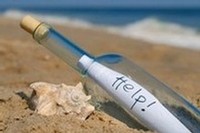 Prior to processing the wine club, a courtesy email is sent to all members outlining the specific selections at that time. Wine club allocations are chosen on a variety of factors. It may be focused on the newest, previously unreleased wines. It may be recent award winning wines, or sometimes a vintage wine that is in its prime and a limited quantity remains. The email details the planned packages, and includes an invitation to customize should one choose to do so.
Prior to processing the wine club, a courtesy email is sent to all members outlining the specific selections at that time. Wine club allocations are chosen on a variety of factors. It may be focused on the newest, previously unreleased wines. It may be recent award winning wines, or sometimes a vintage wine that is in its prime and a limited quantity remains. The email details the planned packages, and includes an invitation to customize should one choose to do so.
We then assume that if our members send no response, they are happy to be receiving the wines detailed in the message, and those are processed to the corresponding memberships. Anyone sending a reply with requests for specific wines, those are substituted and become the current club package.
Ultimately, as long as club members are interactive they can tailor the club wines to be precisely what they want. There are also various other benefits. Aside from the standard club discounts, we occasionally share some special offers where club members get additional discounts, up to 50% off!! You get complimentary tastings at the winery for you and your guests when you visit, you get first access to our extremely limited production wines, as well as our most profound gratitude.
Additionally, on select days during the year, we are members of the "Taste 116" association and we present wine club appreciation events where, if you are a member at Ektimo you are also extended club membership privileges at the other association wineries. A nice little perk
The Role of the Wine Glass
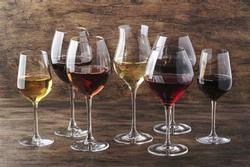
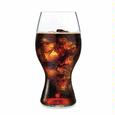
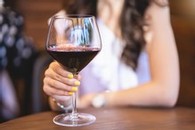 Stylized glassware is not without its merits, designer glassware is pretty, and there is no doubt that the elegant lines and spacious globes are attractive structures unto themselves, and as such present a magnificent frame for a multitude of elixirs. They feel refined, sparkle in the light, and are downright striking seductive vessels for enhancing the experience.
Stylized glassware is not without its merits, designer glassware is pretty, and there is no doubt that the elegant lines and spacious globes are attractive structures unto themselves, and as such present a magnificent frame for a multitude of elixirs. They feel refined, sparkle in the light, and are downright striking seductive vessels for enhancing the experience.
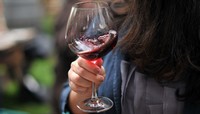 Additionally, the glassware is engineered in a multitude of shapes and designs that undeniably enhance the diffusion of the wine which makes inhaling the aromatics easier and more concentrated. Some will even argue that some of the glass designs may occasionally direct the initial impact of the contents of the glass preferentially to specific areas of taste buds. There are even classes where you will be instructed to taste the same wine from different glasses and experience the "vast tangible difference".
Additionally, the glassware is engineered in a multitude of shapes and designs that undeniably enhance the diffusion of the wine which makes inhaling the aromatics easier and more concentrated. Some will even argue that some of the glass designs may occasionally direct the initial impact of the contents of the glass preferentially to specific areas of taste buds. There are even classes where you will be instructed to taste the same wine from different glasses and experience the "vast tangible difference".
The fact of the matter is that when a normal person takes a sip of wine, it cascades all over the tongue and palate yielding a multi faceted experience that is a collaboration of all tangible tasting experiences to yield "a flavor". This is where the curated sale of designer glassware starts to weave its web.
One of the most powerful aspects of the tasting experience is the power of suggestion, and if the tasting experience is liberally sprinkled with subliminal directions of what wonders will be discovered it is almost like being handed a treasure map. If someone during a sensory experience suggests that you look for a particular sensation, they are urging you down a narrow path where you will be rewarded by being right. For example, if someone asks you to imagine a strawberry, and if you have ever had a strawberry, your memory pathways draw on the memory of experiencing a strawberry, and at that moment you will have a phantom memory experience of that strawberry. Tie this to what you have been invited to experience, and it is not too much of a stretch to say that strawberry will become a part of your present sensory experience.

Starting to get the picture? If you want to believe that the information you are being supplied with is accurate, it will have a far greater impact on your conclusion than the shape of the vessel. Here is where the glassware design argument starts to crumble.
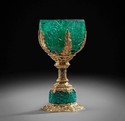
 Provided that your "vessel" is made of a non reactive substance (glass, ceramic cup, titanium etc.) it will not change the true flavor or bouquet of the wine period. The shape and size of the glass may affect how the released aromas may become focused or concentrated for easier detection, but the bouquet remains the same. For instance, take the glass off a (clean) hurricane lamp, place it over a teacup of wine and it will help you concentrate the emanating aroma, but the actual aroma remains the same. If you pour the same wine to the brim in a shot glass, the bouquet does not disappear, it remains the same, it just becomes a little harder to detect.
Provided that your "vessel" is made of a non reactive substance (glass, ceramic cup, titanium etc.) it will not change the true flavor or bouquet of the wine period. The shape and size of the glass may affect how the released aromas may become focused or concentrated for easier detection, but the bouquet remains the same. For instance, take the glass off a (clean) hurricane lamp, place it over a teacup of wine and it will help you concentrate the emanating aroma, but the actual aroma remains the same. If you pour the same wine to the brim in a shot glass, the bouquet does not disappear, it remains the same, it just becomes a little harder to detect.
Allowing a wine to "breathe" will in time change the aromas of the wine as it interacts with oxygen, sometimes for better sometimes for worse. Pouring a wine into a large globe of a glass and swirling it steadily will allow a wine to "breathe" more rapidly, and while doing so release more of the aromas into the globe so when you sniff the glass, you inhale more particles to stimulate your senses. Pour that same wine into a classic rim porcelain soup bowl, it will breathe more quickly but the aromas will dissipate at the flutter of a butterfly wing.
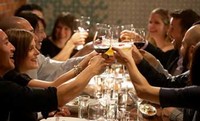 One of the most overlooked aspects of wine enjoyment is that it should not be an object lesson in sensory dissection, but a symphony of sensations that is reater than the sum of its parts. The pleasure of enjoying wine is a complex combination of factors that are unique to every imbiber and their current surroundings, it engages the sense of smell, taste, touch and vision.
One of the most overlooked aspects of wine enjoyment is that it should not be an object lesson in sensory dissection, but a symphony of sensations that is reater than the sum of its parts. The pleasure of enjoying wine is a complex combination of factors that are unique to every imbiber and their current surroundings, it engages the sense of smell, taste, touch and vision.
Bottom line, engage as many senses as you choose in the enjoyment of wine, and you will enhance the decadent pleasure of your wine experience. But remember, the pleasure of wine should be an experience, not a flavor.
"Tasting" Wine
“Tasting” Wine
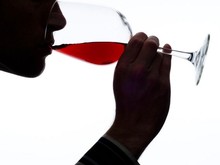 What is it about wines that allows them to be so fascinatingly complex? When it comes to consumable products there are few that receive the attention and analysis that wine does. From the beginner to the master sommelier, much of the fascination of wine tasting lies in the discovery of unique flavor profiles that are often specific to the person on the receiving end of that glass of fine wine. Before we meander down the path of complexity, it is important to note how complexity is experienced.
What is it about wines that allows them to be so fascinatingly complex? When it comes to consumable products there are few that receive the attention and analysis that wine does. From the beginner to the master sommelier, much of the fascination of wine tasting lies in the discovery of unique flavor profiles that are often specific to the person on the receiving end of that glass of fine wine. Before we meander down the path of complexity, it is important to note how complexity is experienced.
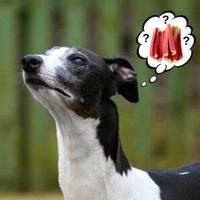
There are a small percentage of the population that are on the low end on the number of taste-buds spectrum. They are challenged more greatly because not only do they have fewer receptors to capture the sensory experience, but they by the same nature have fewer receptors to detect unpleasant elements. In general, this category finds most things taste fine, and need to be coaxed into searching for complexity, but with training tasting skills can be honed and refined.
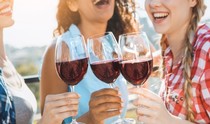 The average person is the ideal consumer. These are the tasters that can study, and practice, practice, practice in order to fully appreciate all the glorious flavors and sensations that wine has to offer. Here lie the true aficionados, constantly searching for the next great wine that will create lasting memories for them, and willing to pursue that quest until the end of time. They are able to identify flaws, yet understand the difference between something being bad and something they do not like.
The average person is the ideal consumer. These are the tasters that can study, and practice, practice, practice in order to fully appreciate all the glorious flavors and sensations that wine has to offer. Here lie the true aficionados, constantly searching for the next great wine that will create lasting memories for them, and willing to pursue that quest until the end of time. They are able to identify flaws, yet understand the difference between something being bad and something they do not like.
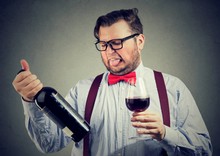 Then there are the “cursed”, the hyper tasters. These are the poor souls that have more taste buds than the rest of us, and those taste buds are very sensitive. Left untrained, these are the most critical of tasters and the bane of winemakers. To them they can either love something or hate something uncompromisingly. They may discover the most exquisite flavor of Wiśnia Nadwiślanka (Eastern European cherry) and find it divine, but then the slightest hint of Havana cigar tobacco triggers a negative response they are unable to escape and so they dislike the wine. As there is simply no such thing as the “perfect wine” they wind up identifying the faults more than they enjoy the glories.
Then there are the “cursed”, the hyper tasters. These are the poor souls that have more taste buds than the rest of us, and those taste buds are very sensitive. Left untrained, these are the most critical of tasters and the bane of winemakers. To them they can either love something or hate something uncompromisingly. They may discover the most exquisite flavor of Wiśnia Nadwiślanka (Eastern European cherry) and find it divine, but then the slightest hint of Havana cigar tobacco triggers a negative response they are unable to escape and so they dislike the wine. As there is simply no such thing as the “perfect wine” they wind up identifying the faults more than they enjoy the glories.
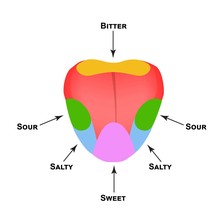 In the simplest of terms there are three primary tasting zones that come into play when tasting wine, sweet which is on the front or tip of the tongue, sour which runs both sides of the tongue, and bitter which is at the base or back of the tongue. Flavors are experienced all across the tongue, but they tend to be perceived or more focused in these general areas.
In the simplest of terms there are three primary tasting zones that come into play when tasting wine, sweet which is on the front or tip of the tongue, sour which runs both sides of the tongue, and bitter which is at the base or back of the tongue. Flavors are experienced all across the tongue, but they tend to be perceived or more focused in these general areas.
The aroma of the wine can often impact the perception of these flavors, as the neural pathways that transmit information to identify smell and taste are deployed simultaneously. If something smells like rose petals, pineapple and vanilla, our receptors are primed to perceive a degree of sweetness, whereas if something smells like grapefruit, lemongrass and rhubarb they will expect tart. Once these messages have been sent to the brain, it then computes which flavors it can identify and looks for flavor memories to pair them with.
 The brain being a complex organ, it also has its weaknesses. The power of suggestion can play tricks on the unwary. Think about the process, if someone mentions that a wine has hints of a relatively common flavor such as lemon, the only way to process that information is for the brain to search for “lemon” and then try to translate that memory into real time for you to identify. If you think hard enough about what lemon smells and tastes like, can you smell or taste it? Just look at the picture and imagine you are biting into the lemon, did your mouth water? The power of suggestion has planted that seed, and you are predisposed to agree with the information given. It is not universal, but it is remarkable how often this works.
The brain being a complex organ, it also has its weaknesses. The power of suggestion can play tricks on the unwary. Think about the process, if someone mentions that a wine has hints of a relatively common flavor such as lemon, the only way to process that information is for the brain to search for “lemon” and then try to translate that memory into real time for you to identify. If you think hard enough about what lemon smells and tastes like, can you smell or taste it? Just look at the picture and imagine you are biting into the lemon, did your mouth water? The power of suggestion has planted that seed, and you are predisposed to agree with the information given. It is not universal, but it is remarkable how often this works.
Now here is where things get interesting. We (excluding some exceptions) are not computers focused on algorithms, or machines with a singular purpose. We are complex organisms that can formulate experiences based on purpose. Rather than simply finding one flavor and focusing on it, we are able to take these multiple flavor compounds and create a kaleidoscope of flavors so not only do we taste the individual components, but the symphony they create together. Then we take that flavor creation and convert it into an emotional experience from which we can derive pleasure, and isn’t that what we really want? Ask yourself this question, is it more important to enjoy the wine or to be able to identify the flavor?
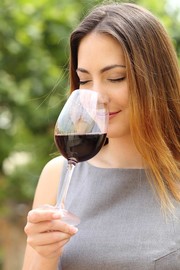 So, what should you take away from this? In my humble opinion the start and finish of a tasting should be all about the pleasure of the experience, and the ability to dissect and articulate the details of that experience should always be secondary. If you want to develop your senses to better appreciate wine, then like any athletic endeavor practice, practice, practice. Amass an encyclopedia of flavor identities and train yourself to be able to recognize them again and again. Try not to be a wine critic, they are the people that are looking for flaws in wine. Be a wine lover, able to identify the flaws in a wine while looking for the finer qualities and enjoying them.
So, what should you take away from this? In my humble opinion the start and finish of a tasting should be all about the pleasure of the experience, and the ability to dissect and articulate the details of that experience should always be secondary. If you want to develop your senses to better appreciate wine, then like any athletic endeavor practice, practice, practice. Amass an encyclopedia of flavor identities and train yourself to be able to recognize them again and again. Try not to be a wine critic, they are the people that are looking for flaws in wine. Be a wine lover, able to identify the flaws in a wine while looking for the finer qualities and enjoying them.
In the end, appreciating wine is like appreciating art, it is in the eye (or the palate) of the beholder. Appreciating wine is knowing what the ideal version of that wine would be and understanding where your current wine falls in that spectrum, but enjoying wine is a far more intricate and complex endeavor that requires an involvement in the situation that goes far beyond the juice in the glass.
Making wine is like making art...
With harvest now picking up speed, wine is being made all around. The art of making wine however can be as simple or as complex as the artist chooses. ANYONE can make wine with only the most basic know how. However making "Great Wine" is a magical alignment where nature, science and art converge. Making great wine on a regular basis is not just a skill, it is an Olympic Gold medal level of accomplishment. Most noteworthy winemakers will categorically state that the way to make great wine is to start with the best grapes, scientifically map out your process and stay out of the way as much as possible. You can make bad wine out of the best grapes.... but you cannot make great wine out of inferior grapes!
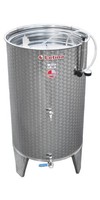
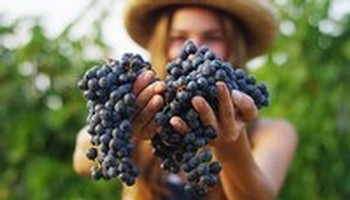 At its simplest, most basic level, making wine is very simple. 1. Harvest your grapes at optimal ripeness 2. Place them in an air cap tank. 3. Add some dry ice and let wine making commence, (Historically, in the country of Georgia Kvevri Jars were filled with grapes and buried underground for winemaking). Ah, but if only it were all so simple. Using the preceding description wine will be made, but unless the process is somewhat controlled it is pure chance whether the wine will be enjoyable or not.
At its simplest, most basic level, making wine is very simple. 1. Harvest your grapes at optimal ripeness 2. Place them in an air cap tank. 3. Add some dry ice and let wine making commence, (Historically, in the country of Georgia Kvevri Jars were filled with grapes and buried underground for winemaking). Ah, but if only it were all so simple. Using the preceding description wine will be made, but unless the process is somewhat controlled it is pure chance whether the wine will be enjoyable or not.
Cleanliness and sterilization are very important as any contamination can quite easily spoil the wine. That being said, most common chemical cleaners are not in play here as they taint the process so you must be very careful to strictly adhere to proper procedure. Once you have your equipment in order, it becomes time to choose the ingredients. Wine can be made from any fruit or vegetable product that contains sugar. I have tasted tomato wine, and carrot wine, and rhubarb wine, and elderberry wine, and strawberry wine, and cranberry wine, and rose petal wine, and pomegranate wine..... but "Vitis Vinifera", the noblest of the grapes are the premium ingredients for making fine wine, and this is generally where the magic happens.
So, what kind of wine do you want to make? White wine? Red Wine? Rosé wine?
 To keep this simple, we will define two sides, red grapes (and the many shades from black to bright crimson) and white grapes (green to pale yellow). In most cases, the pulp of the grape is gong to be pale in color, and in wine the color of the
To keep this simple, we will define two sides, red grapes (and the many shades from black to bright crimson) and white grapes (green to pale yellow). In most cases, the pulp of the grape is gong to be pale in color, and in wine the color of the 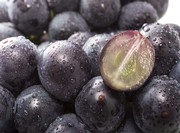 skin can dictate the color of the wine. In white wine, the grapes are harvested cool, destemmed, pressed, and the juice immediately separated from the skins. The pressed juice is then moved to a fresh tank, inoculated with specifically selected yeast (sometimes native yeasts that come in with the grapes are allowed to control fermentation for certain situations) for temperature controlled primary fermentation to begin. Primary fermentation for wines generally takes three to five days.
skin can dictate the color of the wine. In white wine, the grapes are harvested cool, destemmed, pressed, and the juice immediately separated from the skins. The pressed juice is then moved to a fresh tank, inoculated with specifically selected yeast (sometimes native yeasts that come in with the grapes are allowed to control fermentation for certain situations) for temperature controlled primary fermentation to begin. Primary fermentation for wines generally takes three to five days.
The primary fermentation is where the alcohol is generated. At its simplest, the yeast eats the sugar and the result is the creation of alcohol and carbon dioxide. The fermentation process will also generate some heat, so temperature control is important to control the fermentation process accurately. The extent of the fermentation process will depend on the wine and the grapes. The amount of sugar in the grapes (measured in brix) will determine the alcohol level of the wine. The brix levels in the grapes start to rise dramatically in August, and the longer the grapes are on the vine the higher the 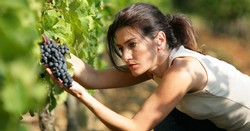 sugar. Bright sunshine and heat will cause the vines to photosynthesize and ripen the fruit more quickly, so ideally July & August will be temperate, cool mornings warm days with gentle sunshine and cool evenings. Extended time on the vine without sugars rising too fast is where the best flavor development happens. Ideally, the warm temperate conditions repeat allowing the winemaker to track the sugar levels along with flavor development and then harvest at their leisure. Extreme heat spikes with no cooling can force an earlier harvest which needs expertise to master and still generate magic.
sugar. Bright sunshine and heat will cause the vines to photosynthesize and ripen the fruit more quickly, so ideally July & August will be temperate, cool mornings warm days with gentle sunshine and cool evenings. Extended time on the vine without sugars rising too fast is where the best flavor development happens. Ideally, the warm temperate conditions repeat allowing the winemaker to track the sugar levels along with flavor development and then harvest at their leisure. Extreme heat spikes with no cooling can force an earlier harvest which needs expertise to master and still generate magic.
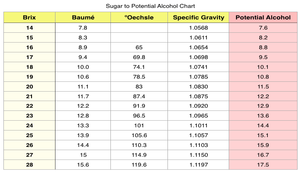
The chart shows the potential alcohol determined by the brix at harvest. If not all the sugars in the grapes get fermented out, the residual sugar level will determine the "sweetness" of the wine. Anything below 0.1% residual sugar is considered dry, and many wines up to 0.2% residual will often present as dry.
Once primary fermentation is complete (about 70% done) the wine will be moved to a second container for fermentation to complete. For some wines, malolactic fermentation is then induced. Unlike primary fermentation, no alcohol is produced in the process. Instead, malic acid (this acid is where the tart, citrus like flavors reside and which make a wine bright and crisp), is converted to lactic acid (often identified as a textural acid that brings a softer richer tone to wines that may be referred to as "buttery" in Chardonnays). This textural exchange impacts the mouth feel and body of the wine. Some white wines are chosen to go through malolactic fermentation, and almost all red wines undergo this step.
 Some of the more common white grape varieties are Chardonnay, Sauvignon Blanc, Gewurtztraminer, Riesling, Viognier, Verdelho, Marsanne, Rousanne, Semillon, Muscat, Albarino, Chenin Blanc, Pinot Gris and so many more. The grape colors range from vibrant green, to opaque yellow, to deep pink but all the wines are white. "Click here" for some basic profiles.
Some of the more common white grape varieties are Chardonnay, Sauvignon Blanc, Gewurtztraminer, Riesling, Viognier, Verdelho, Marsanne, Rousanne, Semillon, Muscat, Albarino, Chenin Blanc, Pinot Gris and so many more. The grape colors range from vibrant green, to opaque yellow, to deep pink but all the wines are white. "Click here" for some basic profiles.
For Rosé wines, the process is very much like making white wine. Rosé is not a specific grape "click here to learn more", but a white wine style using red grapes and limiting the skin contact time to add the appropriate level of pink hue. For Rosé wines, the red grapes are harvested cool and destemmed. Then the juice, skin and seeds are moved to a tank where, depending on the grape variety and style of wine to be made, they will cold soak for 6 to 12 hours before being pressed. The pressed juice is then moved to a fresh tank, inoculated with specifically selected yeast (sometimes native yeasts that come in with the grapes are allowed to control fermentation for certain situations) for temperature controlled primary fermentation to begin.
More and more you will discover "Varietal Rosé", Rosé of Pinot Noir, Rosé of Malbec, Rosé of Cabernet Franc, Rosé of Zinfandel, Rosé of Sangiovese and many more. There are many unique characteristics to be discovered in this genre.
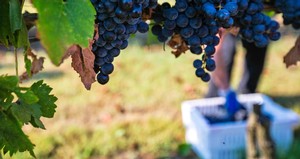 Then there is red wine in its many many visions of glory. Cabernet Sauvignon, Pinot Noir, Malbec, Merlot, Cabernet Franc, Zinfandel, Sangiovese, Carignane, Grenache, Cinsault, Syrah, Petite Sirah, Nebbiolo, Barbera, Barbaresco, Tempranillo, Alicante Bouschet..... the list goes on and on. For red wines, the grapes are harvested cool and destemmed. Then the juice, skin and seeds are moved to a tank where cold maceration takes place. At this point the wine is ready to start fermenting, so to prevent this the contents are kept cold allowing for slow and prolonged flavor extraction. Cold maceration can be as little as 5 hours, and up to 10 days depending on the wine. During this process, the grape skins and seeds will float to the top of the tank, and the juice will sink to the bottom.
Then there is red wine in its many many visions of glory. Cabernet Sauvignon, Pinot Noir, Malbec, Merlot, Cabernet Franc, Zinfandel, Sangiovese, Carignane, Grenache, Cinsault, Syrah, Petite Sirah, Nebbiolo, Barbera, Barbaresco, Tempranillo, Alicante Bouschet..... the list goes on and on. For red wines, the grapes are harvested cool and destemmed. Then the juice, skin and seeds are moved to a tank where cold maceration takes place. At this point the wine is ready to start fermenting, so to prevent this the contents are kept cold allowing for slow and prolonged flavor extraction. Cold maceration can be as little as 5 hours, and up to 10 days depending on the wine. During this process, the grape skins and seeds will float to the top of the tank, and the juice will sink to the bottom.
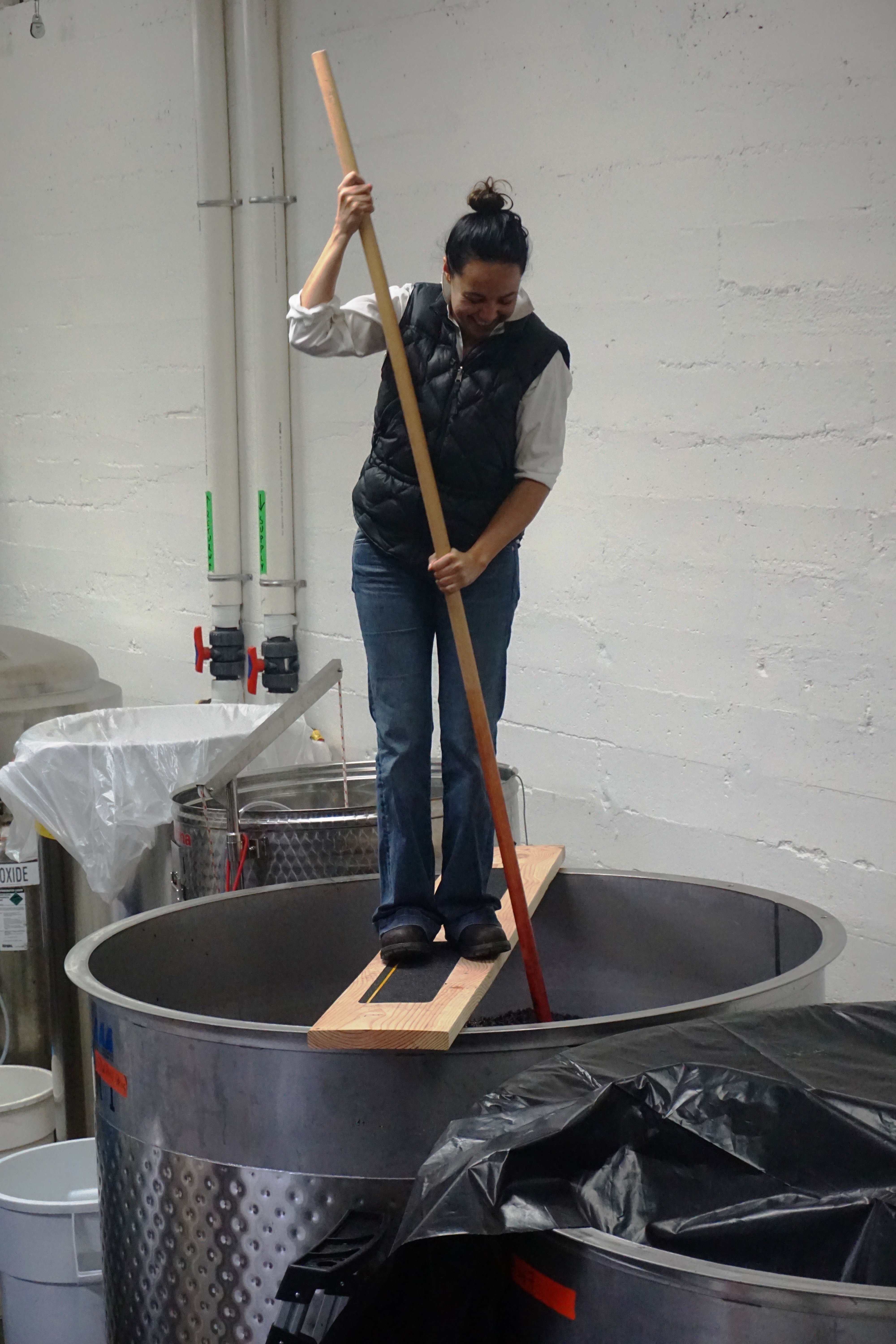 To continue optimal extraction, a "punch down" process or "pump over" will be scheduled throughout the process. The goal here is to extract the precise amount of color, flavor and texture from the solids. In the punch down, the skins and seeds are manually forced back into the juice and in soaking them more of the flavors get extracted.
To continue optimal extraction, a "punch down" process or "pump over" will be scheduled throughout the process. The goal here is to extract the precise amount of color, flavor and texture from the solids. In the punch down, the skins and seeds are manually forced back into the juice and in soaking them more of the flavors get extracted.
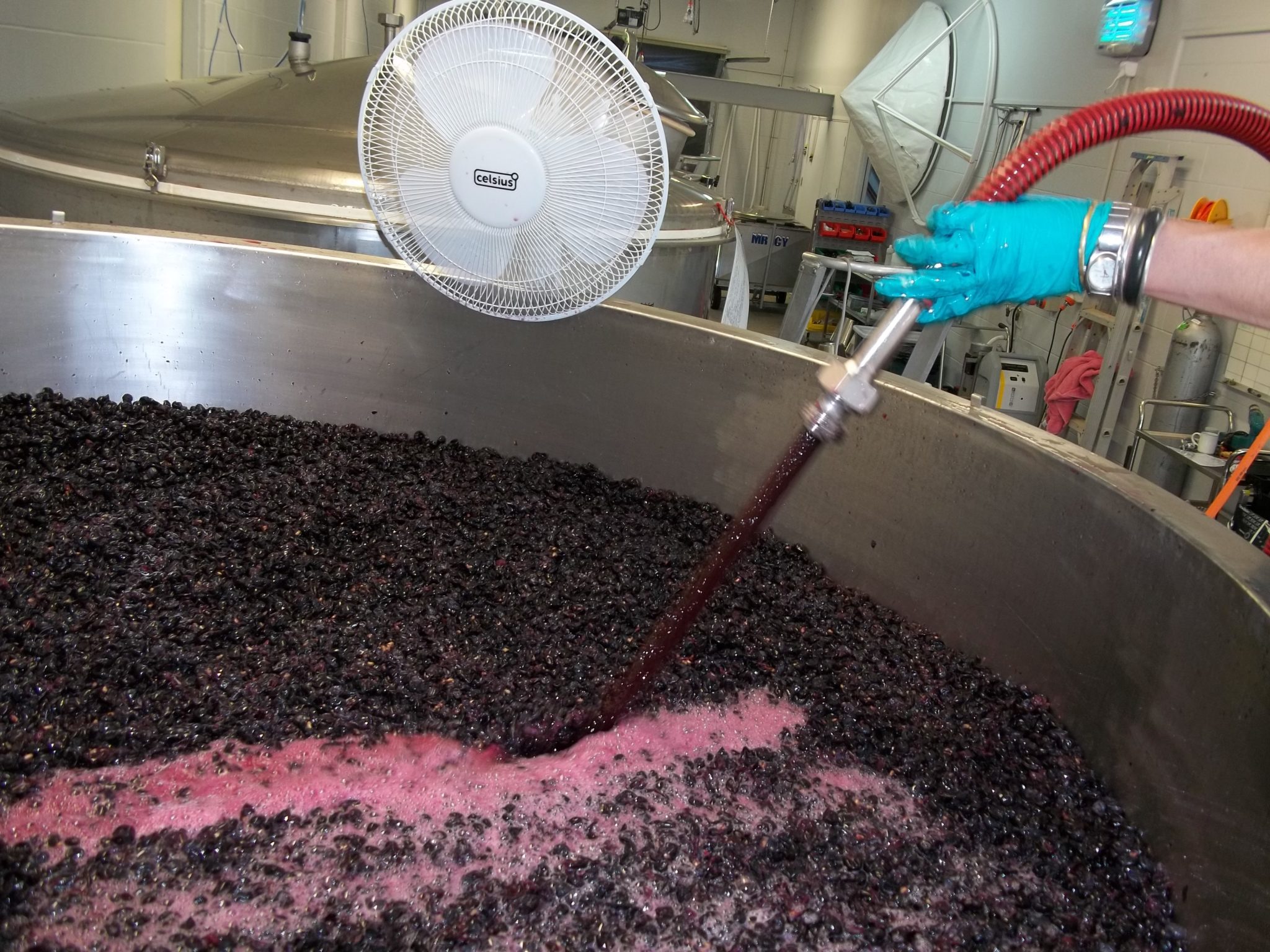 On a larger scale, for the "pump over" imagine the wine tank as a massive coffee percolator. The skins and the seeds float to the top of the tank and the juice sinks to the bottom. We attach a hose to an opening on the bottom of the tank, the tank is connected to a pump, which has a hose on the other end that goes back into the top of the tank. when the motor starts running, the juice is pulled from the bottom of the tank, and pumped over the solids on the top soaking them and extracting more flavor.
On a larger scale, for the "pump over" imagine the wine tank as a massive coffee percolator. The skins and the seeds float to the top of the tank and the juice sinks to the bottom. We attach a hose to an opening on the bottom of the tank, the tank is connected to a pump, which has a hose on the other end that goes back into the top of the tank. when the motor starts running, the juice is pulled from the bottom of the tank, and pumped over the solids on the top soaking them and extracting more flavor.
Once it is determined that the cold soak has drawn out flavors to perfection, the temperature of the juice will be allowed to rise slowly, and the primary fermentation of the red wine will commence whether it be naturally or by inoculation with customized yeasts for specific flavor profiles. This primary and subsequent malolactic fermentation will continue generally from 14 to 24 days depending on the wine, and only once the balance is right will the juices be pressed away (or sometimes just free run) from the skins and the seeds and moved to sterile containers to continue to completion.
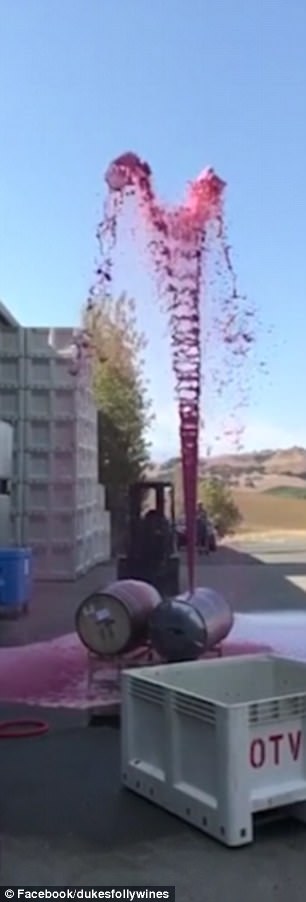 Most typically, red wines will be stored in barrels where fermentation will complete and maturation will commence. Sometimes barrel fermentation can be quite vigorous and it is not uncommon to have barrels blast out the closure and spray foam into the air like a purple geyser.
Most typically, red wines will be stored in barrels where fermentation will complete and maturation will commence. Sometimes barrel fermentation can be quite vigorous and it is not uncommon to have barrels blast out the closure and spray foam into the air like a purple geyser.
Barrel aging can vary considerably, with some wines briefly lingering for 4-5 months, whereas some of the more serious red wines will occasionally age for 4 years in the barrel. Throughout the entire aging process, the wines must be managed, monitored and maintained in good health to avoid any problems. Wines are regularly removed from their barrels temporarily so that the barrels can be "sterilized" with steam before the wine is returned to continue aging.

Once the wine is considered "complete", it is time to bottle. There are various stabilizing processes that need to occur so that the wine entering the bottle is stable and no longer volatile in any way. Some wines may be filtered, some wines not depending on the maker. The bottle is the stable resting place where the wine will remain until it is intended to be consumed......... but that is a whole other story.
So, the basics of making wine. Really simple, and quite complex.

Ektimo 2022.... Harvest Begins
Hey! 2022..... you are lookin good!

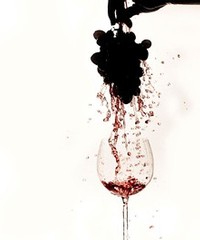 At the beginning of the year, as seems to be the case more often than not in recent years, the ongoing drought conditions are taking their toll. Spring was early, temperate and long with a couple of hot spells thrown in for good measure. The vines reacted accordingly in anticipation, and even early estimates were that overall crop levels would be down this year.
At the beginning of the year, as seems to be the case more often than not in recent years, the ongoing drought conditions are taking their toll. Spring was early, temperate and long with a couple of hot spells thrown in for good measure. The vines reacted accordingly in anticipation, and even early estimates were that overall crop levels would be down this year.
Our vines behaved very professionally, co-operating at every stage to give us a nice even crop, good set on the vines, and tapping the sparse resources gently as if understanding the best practices needed to get through the summer. Clear skies in the daytime, and a merciful Pacific marine layer in the evenings has so far kept the summer temperate and the morning air fresh and clean. The perfect conditions.
Now as we enter the home stretch, the worried looks that show up every year are back. Farmers are notorious pessimists, "what is going to go wrong now? this is all going too perfectly". Go back to those same farmers in two months time and you will see an enormous grin, and just a little drool on their chin as they tell you "this is going to be the vintage of the century!".... funny, the cycle seems to repeat year after year : )
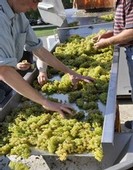 The reality is, we will not truly know until the grapes are harvested and processed. Once you have the grapes out of the vineyard and in your control, then, and only then can we speak to the potential quality of the wine, and as every winemaker worthy of the title will tell you "once you have the best grapes in the world the only thing you need to do is not screw up". It is like a master sculptor with the perfect piece of stone, the masterpiece is already inside and his only task is to release it.
The reality is, we will not truly know until the grapes are harvested and processed. Once you have the grapes out of the vineyard and in your control, then, and only then can we speak to the potential quality of the wine, and as every winemaker worthy of the title will tell you "once you have the best grapes in the world the only thing you need to do is not screw up". It is like a master sculptor with the perfect piece of stone, the masterpiece is already inside and his only task is to release it.
So, this is the time of year when all the winemakers are squeezing out the last few days of vacation because the next 100 days are the superbowl, the world series and the Ironman all rolled into one. Here at Ektimo, our estate vineyard is right around 13 brix and steadily rising so harvest is still a few weeks out, however regular checking will start next week and everything will be under a close watch for the perfect moment to bring our Pinot Noir across the finish line. Equipment has been cleaned and checked, the tanks where the grapes will be landing are sterile and ready to go. Our crew is primed and ready to go into action at a moments notice.
Things are a little different at Ektimo, as we do have a number of custom crush clients that share our space, equipment, and our winemaker's expert know how, so one of our clients will be bringing the first fruit to be processed next Monday. Sauvignon Blanc generally harvests earlier than most grape varieties, with various white grape varieties close behind. Pino Noir is usually first in line for the red grapes somewhere towards the end of August. Cooler temperatures stretch things out a little, extended heat spells push things forward quickly, so watching the variables and reacting to them becomes the plan. Being prepared to work 14-16 hour days, sometimes weeks without a day off. We salute the brave men & women that will be leaving it all on the field to bring us the best wines possible.
100 days...... and counting.
Food Pairing Myths
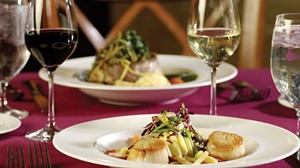 Pretty much everyone is familiar with one of the most generic generalizations about wine & food pairing.... "red wines go with meat, white wines go with fish". In the very broadest of brush strokes there is a little validity to this concept, but there is so much more to consider here. So let's delve a little deeper here, and hopefully offer some insight into this equation.
Pretty much everyone is familiar with one of the most generic generalizations about wine & food pairing.... "red wines go with meat, white wines go with fish". In the very broadest of brush strokes there is a little validity to this concept, but there is so much more to consider here. So let's delve a little deeper here, and hopefully offer some insight into this equation.
First and foremost, let me step out and state that there are no wrong decisions here. There are however better ones. When it comes to food & wine pairings there are basically three specific objectives.
1. Drinking your preferred wine and eating your preferred food side by side without seeking either to enhance the other.
2. Pairing wines with foods where there is a palate cleansing effect that heightens the individual component appreciation.
3. Pairing specific wines & foods to create a complementary harmony that transcends the sum of its parts.
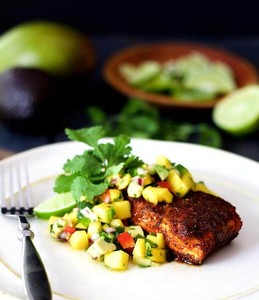 Let us address each of these in turn, and offer some "opinion" on each approach. The first is the easiest and perhaps the most straightforward to accomplish, yet it creates a level of hesitancy where there really should be none. On any given day, we may develop a craving for a specific wine, or a specific food or both. When presented with a magnificent bottle of 2017 Napa Valley Cabernet Sauvignon it can be hard to resist. Yet on the menu that night is Cumin Crusted Grouper served over a roasted vegetable medley topped with a Picante Mango Salsa and finished with a drizzle of Annato Oil.
Let us address each of these in turn, and offer some "opinion" on each approach. The first is the easiest and perhaps the most straightforward to accomplish, yet it creates a level of hesitancy where there really should be none. On any given day, we may develop a craving for a specific wine, or a specific food or both. When presented with a magnificent bottle of 2017 Napa Valley Cabernet Sauvignon it can be hard to resist. Yet on the menu that night is Cumin Crusted Grouper served over a roasted vegetable medley topped with a Picante Mango Salsa and finished with a drizzle of Annato Oil.
On the face of it, there is nothing complementary about these wine and food selections. The flavor profiles do not offer any harmonies that will provide enhancement of one another. So what? If this is what is on the table, there is still immense pleasure on the menu. This is the occasion where we compartmentalize our pleasures, to immerse ourselves in the enjoyment of the individual components separately. So take a couple of bites of the grouper, and let the bright, tropical elements invigorate your palate with brisk clean flavors, savor them for a minute or two as the carnival slowly subsides.
 Now, take a moment to enoy the rich, riparian brambly berry aromas of the wine. Swirl the wine in the glass and breathe in the esthers again and delight in the richness of the wine. Now take your first mouthwatering sip. The colorful mosaic of flavors will dance across your palate, and a caleidoscope of flavor sparks will emanate across every corner of your palate, blackberry, raspberry, cassis, wild strawberry all embraced in a luxurious blanket of cocoa tannin that grips your taste buds and keeps the opulent flavors lingering on and on. Enjoy the moment as the brazen textures slowly dissipate leaving you with a satisfied smile.
Now, take a moment to enoy the rich, riparian brambly berry aromas of the wine. Swirl the wine in the glass and breathe in the esthers again and delight in the richness of the wine. Now take your first mouthwatering sip. The colorful mosaic of flavors will dance across your palate, and a caleidoscope of flavor sparks will emanate across every corner of your palate, blackberry, raspberry, cassis, wild strawberry all embraced in a luxurious blanket of cocoa tannin that grips your taste buds and keeps the opulent flavors lingering on and on. Enjoy the moment as the brazen textures slowly dissipate leaving you with a satisfied smile.
Now go back for another bite of the tropical grouper....... and here we go again. Now you are experiencing two quite disparate sensations, each yielding immense pleasure yet quite unrelated. Embrace each as its own, unique, pleasurable expreience. Enjoying two very different things at the same time, side by side.
OK..... we have overcome the hesitancy with non pairing enjoyment of food and wine. Now let us move to level 2 where we are pairing wine & food with the specific goal of refreshing the palate to enhance enjoyment. In some ways this is a version of the side by side experience, but with the important difference of having a food and wine that would not clash as they cross paths.
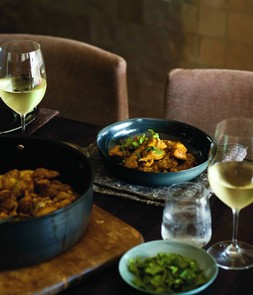 For our exaple here we will use a pairing that is often overlooked yet is immenseley pleasurable. Let us take a trip to the exotic with a savory Indian Madras Chicken Curry served with a fragrant pilau rice and tandoori naan bread. As a partner for this adventure, let us pair a bone dry Russian River Gewurtztraminer, well chilled and ready to serve.
For our exaple here we will use a pairing that is often overlooked yet is immenseley pleasurable. Let us take a trip to the exotic with a savory Indian Madras Chicken Curry served with a fragrant pilau rice and tandoori naan bread. As a partner for this adventure, let us pair a bone dry Russian River Gewurtztraminer, well chilled and ready to serve.
Indian food is a vibrant, colorful combination of flavors and spices that invigorates the senses. The complex array of ingredients in the sauces and seasonings is a technicolor experience that is unique and intoxicating. The Madras curry is a medium spicy version will bring a blush to your cheek, a gentle glow will emanate from the spicy melange. The aromas will explode and take over your airways upon arrival. The first bite is a starburst of flavor concentration that grips every part of your palate and brings it to light. As you savor the moment a pulsating glow will ebb and flow gripping your tastebuds and refusing to let go, lingering on and on.
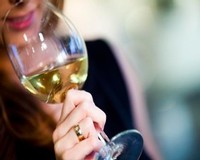 Now raise the glass of Gewurtztraminer and marvel at the perfumed fragrance of stone fruits, apricot, mango, mandarin orange and rose petal. The soothing effect is immediate, and all of a sudden the senses are transported to another realm. Now take your first refreshing sip. The chilled nectar instantly soothes the palate, tames the tantrum it just replaced, and the endorphin rush of the spices just dispelled by the cool mouthwatering acidity and brightness of mandarin apricot highlights each of the stone fruit flavors and paints a colorful canvas that is awash with a perception of sweetness that is really not there. Your palate is refreshed.
Now raise the glass of Gewurtztraminer and marvel at the perfumed fragrance of stone fruits, apricot, mango, mandarin orange and rose petal. The soothing effect is immediate, and all of a sudden the senses are transported to another realm. Now take your first refreshing sip. The chilled nectar instantly soothes the palate, tames the tantrum it just replaced, and the endorphin rush of the spices just dispelled by the cool mouthwatering acidity and brightness of mandarin apricot highlights each of the stone fruit flavors and paints a colorful canvas that is awash with a perception of sweetness that is really not there. Your palate is refreshed.
The juxtaposition is so pronounced that it is hard to decide which way to sway next. As you alternate between the savory spices and the crisp fruit essences the vigorous ballet that ensues keeps the senses engaged from the first bite to the last sip. Two palate pleasing sensations, a pendulum of pleasure where it seems like each would be lessened with the others absence. Flavor displacement at its most sublime.
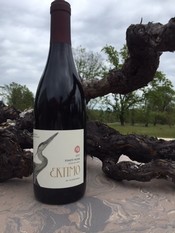 And now.... the holy grail of food pairing, the tastebud tango, the palate paso doble, the sensory swing. This is where the the science of ingredients and complex chemistry of flavor interactions is married with the artistry of the culinary expreience to create sentations that emerge greater than the sum of their parts. Where harmonies and crescendo's are woven into a complex tapestry of sensory pleasure that is a consumable nirvana.
And now.... the holy grail of food pairing, the tastebud tango, the palate paso doble, the sensory swing. This is where the the science of ingredients and complex chemistry of flavor interactions is married with the artistry of the culinary expreience to create sentations that emerge greater than the sum of their parts. Where harmonies and crescendo's are woven into a complex tapestry of sensory pleasure that is a consumable nirvana.
This is a multi faceted creation that is as much about directing as it is about performance. There is an art to experiencing flavor that is a learned experience more than it is a natural ability. Being able to create the perfect pairing is one thing, being able to convey that vision is a curated experience beyond just the food and the wine. With the right guide, this is an unparalleled culinary adventure that memories are made of.
Creating this exerience is best embarked upon by first selecting the wine, as this is already a completed portion of the equation. Our 2019 Estate "Mount Eden Clone" Pinot Noir is a more robust take on Pinot Noir, lithe and luscious yet with elegant heft and substance, focused and precise. Deeper in color, richer in aroma and more concentrated on the palate, Crimson Passion Cherry, pomegranate and Thundercloud Plum flecked with sparks of Red Delicious apple and Crimson Queen cranberry in a Spanish Cedar chest, with supple tannins as smooth as satin sheets. On its own, a veritable Mosaic of flavors that cascades across the palate, each sip revealing a kaleidoscope of flavor.
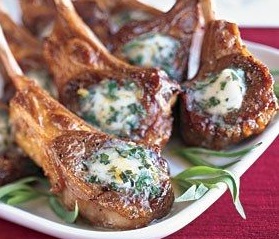
Now for your culinary pleasure I present an Herb Crusted Rack of Lamb, topped with a blue cheese compound butter and served with a forest mushroom medley and buttermilk mashed potatoes. There is a complexity to this dish with an array of herbal elements, gaminess, earthiness, buttery richness, tanginess, and yet a harmony among the elements. Each element of the dish pleases the palate with focused flavors, construct two elements into one bite and they interact beautifully, each additional element paints a new picture of sensory accomplishment. The meal on its own is a feast for the senses that touches every tastebud and makes it sing, each food element evoking a seasoned memory from the past.
Now invite the wine to interact with the dish. The base aromatics cross boundaries as the earth tones of the mushrooms are accentuated by the forest florals of the wine, the gaminess of the lamb slathered with rich berry notes, the charred elements brushed with cedar, the melange of herbs hinting at herbal undertones in the wine, even the cracked pepper becomes amplified by the alcohol of the wine. If you focus, and seek out the various elements and allow them to interact, there is a multitude of sensations as the lamb alone with the wine creates one flavor, the lamb with the compound butter on the surface with the wine a different sensation, the mushrooms and the wine, a new flavor. Seek out and sample every combination, and as you do immerse yourself in the sensations created. Truly a feast for the senses.
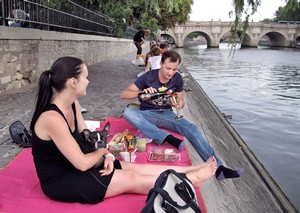 Magnificent food and wine pairing need not be exceedingly complex. Picture yourself with a friend on the banks of the Seine river in Paris, Notre Dame Cathedral a majestic backdrop. In your picnic basket a bottle of 2018 Ektimo Russian River Chardonnay, a crunchy freshly baked french baguette, Échiré Doux Butter, and Maldon Sea salt. Pour a glass of the Chardonnay and raise a glass to the good life. Clink. The Crisp apples & pears burst forth first, a tiny hint of vanilla on the mid palate, a flinty minerality engages in swordplay with a touch of richness with dry winning the battle but richness lingering on the finish and beckoning another sip. Split the baguette lengthwise, slather the butter generously across the length, and just a light sprinkling of the salt for flavor sparks. The Chardonnay/Baguette experience is profoundly engaging, yet unassuming enough to allow your surroundings to complete the experience. C'est magnifique !
Magnificent food and wine pairing need not be exceedingly complex. Picture yourself with a friend on the banks of the Seine river in Paris, Notre Dame Cathedral a majestic backdrop. In your picnic basket a bottle of 2018 Ektimo Russian River Chardonnay, a crunchy freshly baked french baguette, Échiré Doux Butter, and Maldon Sea salt. Pour a glass of the Chardonnay and raise a glass to the good life. Clink. The Crisp apples & pears burst forth first, a tiny hint of vanilla on the mid palate, a flinty minerality engages in swordplay with a touch of richness with dry winning the battle but richness lingering on the finish and beckoning another sip. Split the baguette lengthwise, slather the butter generously across the length, and just a light sprinkling of the salt for flavor sparks. The Chardonnay/Baguette experience is profoundly engaging, yet unassuming enough to allow your surroundings to complete the experience. C'est magnifique !
So.... the bottom line is, the food & wine experience is as simple or as complex as you choose to make it, and the enjoyment is only limited by your imagination.
Judging wines, it's not a skill, it's an opinion
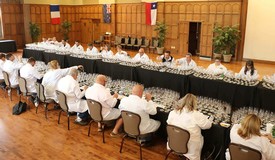 Judging wines... the glitz and glamor of presenting yourself to "critics". Whether it is national publications, International or Statewide competitions, or the latest influencer in the field. What makes this such an important endeavor? Why do wineries create their works of art and then put them out on display in front of "strangers" to see what they have to say? The truth? Marketing!!
Judging wines... the glitz and glamor of presenting yourself to "critics". Whether it is national publications, International or Statewide competitions, or the latest influencer in the field. What makes this such an important endeavor? Why do wineries create their works of art and then put them out on display in front of "strangers" to see what they have to say? The truth? Marketing!!
Wineries, at some considerable expense, present their wines at competitions to see if they can garner accolades and awards. What value these accolades have is precisely proportional to how much importance you are willing to assign to the "judges". Now matter how anyone tries to justify themselves as an expert when it comes to judging wine, whether it be Robert Parker... or Peter Parker, both will spin you a web of comments that will vie for your attention.
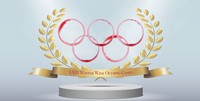 So, let's establish some facts here right now. Judging wine is not a science, it is not a
So, let's establish some facts here right now. Judging wine is not a science, it is not a skill, it is not an olympic sport and it is not a talent. Judging wine is an expression of opinion about a product based on a variety of parameters and preferences. This should not be confused with detecting flaws in wines, or the ability to selectively detect profile identity, or the ability to articulate ones experiences in an attractive manner to make something sound appealing. Those are skills that many can hone with practice. What you are observing is someone being given wine and then being asked "which one do you like best"? You get a gold medal, and you get a gold medal, and you get a gold medal.
skill, it is not an olympic sport and it is not a talent. Judging wine is an expression of opinion about a product based on a variety of parameters and preferences. This should not be confused with detecting flaws in wines, or the ability to selectively detect profile identity, or the ability to articulate ones experiences in an attractive manner to make something sound appealing. Those are skills that many can hone with practice. What you are observing is someone being given wine and then being asked "which one do you like best"? You get a gold medal, and you get a gold medal, and you get a gold medal.
All that being said, that does not mean that the awards, point scores and various commentaries about wine have no value. Indeed you may often find that you agree with the judges that made a wine double gold, best of class and 98 points. Most judges in respected competitions have an established background in wine, and as most competitions are "blind tastings" they offer their best evaluations based on their palate experience. It is just that at the end of the day, their scores are based upon their preferences plain and simple.
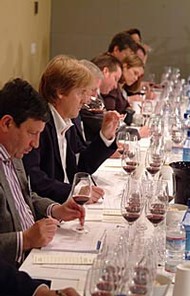 So... have you ever wanted to be a wine judge? Well it is not all glamor. Try sitting down and tasting 120 Zinfandels in three hours, all served blind, some of them just downright awful, some so rich and powerful they will grow hair on your tongue, and a good portion of them being similar enough that they would be hard to tell apart. Which one is the best? Rest assured that if you did this for 3 days in a row, you would very likely not choose the same wine each time. Oh but what a challenge!!
So... have you ever wanted to be a wine judge? Well it is not all glamor. Try sitting down and tasting 120 Zinfandels in three hours, all served blind, some of them just downright awful, some so rich and powerful they will grow hair on your tongue, and a good portion of them being similar enough that they would be hard to tell apart. Which one is the best? Rest assured that if you did this for 3 days in a row, you would very likely not choose the same wine each time. Oh but what a challenge!!
So... now you are ready to become a wine judge. I choose this term carefully because it is decidedly different from being a wine critic, try not being a critic. If you take one thing away from this entire piece, it should be that when it comes to judging wine it is always best approached from the perspective of searching for the positive qualities of any wine. If you task yourself with finding the flaws in wine it is pretty rare that you will not find them and that just starts you off in the wrong direction. Be a wine appreciator, not a critic.
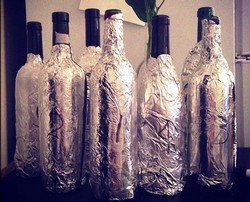 The best way to start "judging" wine is by hosting an event with friends. With enough interest this can evolve into a most pleasurable monthly get together. First, choose your participants, then choose the wine. 6-10 people is a good number but that part is entirely up to the host. Then when choosing the wine choose the varietal and the vintage, like 2019 Pinot Noir or 2020 Chardonnay. Now task everyone to bring a bottle that fits your chosen category and make sure you have time to get the wine to optimal temperature etc. Now, strip any telltale foils off the neck of the bottle, and then wrap each bottle all the way up to the neck in foil. Then, have someone else take over, mix up the bottles and use a sharpie and mark them 1-8 or whatever.
The best way to start "judging" wine is by hosting an event with friends. With enough interest this can evolve into a most pleasurable monthly get together. First, choose your participants, then choose the wine. 6-10 people is a good number but that part is entirely up to the host. Then when choosing the wine choose the varietal and the vintage, like 2019 Pinot Noir or 2020 Chardonnay. Now task everyone to bring a bottle that fits your chosen category and make sure you have time to get the wine to optimal temperature etc. Now, strip any telltale foils off the neck of the bottle, and then wrap each bottle all the way up to the neck in foil. Then, have someone else take over, mix up the bottles and use a sharpie and mark them 1-8 or whatever.
Ideally you will have enough glasses so that everyone can have a glass for each wine. Wine glasses would be ideal, but really any glasses will work. Now line up the glasses 1-8, pour about 1 1/2 oz of wine number 1 into glass number 1, same wine number 2 into glass number 2 etc. Once all the wines have been poured, you are ready to do some tasting, and have something to write with and on so you can create your own comments and scores.
Now, start with with wine number 1. Look at it, smell it, taste it. What do you think? Try to extract as much information as you can from your first impression and take some notes so you can describe the expreience that wine gave to you. Articulating flavors takes practice, but the main thing is to be honest, and if possible try to be creative.
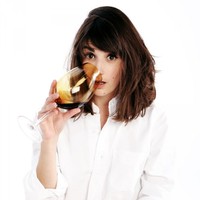 Taster 1 ..... Nice color, pleasant aroma of cherries, tasted like cherries and blackberries, smooth tannin. Rank 3
Taster 1 ..... Nice color, pleasant aroma of cherries, tasted like cherries and blackberries, smooth tannin. Rank 3
Taster 2 .... Clear garnet, cherry blossom aromas with notes of oak and sage, light cherry flavor with charred oak and medicinal overtones. Astringent finish with bitter tannins that leave the mouth parched. Rank 8
Same wine, two opinions. Always remember there are no wrong opinions, just different ones. We do not all like the same thing
Then take a few seconds, drink some water or eat some bread, whatever you think will work for you. Now go to wine number 2 and put it to the same test. Proceed one by one until you have completed the first round of tasting. After having established an opinion on each wine, now you are ready to judge them against each other. Feel free to add to your notes as some wines will change with time in the glass. Then rank them once you have tasted them all. It is usually easiest to eliminate your least favorites and not taste them any more and assign them the lower ranks. Your top choices may take some back & forth to choose a favorite.
The idea behind having them all poured is you will want to go back & forth a few times as you taste, compare and establish your opinion. Before you are done rank the wines in your order of preference (be sure each participant puts their name on their score sheet so you know whom to give it back to) and then build a score card spreadsheet so you know which wine scored the most and which scored the least points. So for instance if you have 10 participants with 10 wines, 10 would be the top rank, and 1 would be the lowest. Add up the total number of points for each wine. The one with the most points is the top wine, and the one with the least points comes last. Guess what? You just became a judge!!!!
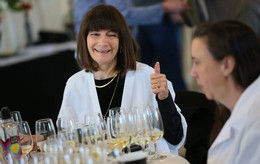
Now the fun part. Go around the group and have everyone express their opinion about the wine with the lowest score and share their ranking for that wine. How many ranked that wine the best? How many ranked it the worst? Keep score as you will likely find not everyone likes the same wine. Once everyone has lodged their opinion and ranking, unwrap the bottle . Whomever brought that bottle should at least know where they got it and how much it was. Repeat for each bottle one at a time until you have gone through the whole lineup. In the end which wine scored the most "best" scores? Was it the $100 bottle of Williams Selyem? The $38 bottle of Ektimo? The $7 bottle of two buck chuck? Now that you know what they are go back and see if they taste different now that they have a label.
The moral here is that your "judging" is by far more important than the judging of Master Sommelier Bubba Burgundy, because unless Bubba is buying that bottle of wine for himself his opinion is pretty worthless. If you get lucky, your favorite wine will fall well within your budget so that you will be able to enjoy it regularly. If not, sometimes you just need to create a special occasion.
Food & Wine... yes.. no, but yes of course only sometimes maybe but always either or.
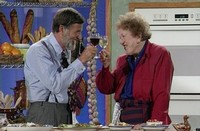 Food & Wine, the truth is yes to both.
Food & Wine, the truth is yes to both.
Much is made of majestic pairings, where food & wine share a stage and deliver a performance for the ages. When you get it right the results can be sublime. The truth is that food and wine pairings are rarely a complete failure. For food & wine to complement each other there are so many variables that come into play, yet ultimately the success will be in the palate of the consumer.
Let's take a look at this from different perspectives. There are great wines, and there are great meals. In an ideal world you should derive great satisfaction from both. When the stars align there can be spectacular chemistry between the two that transcends either and elevates the experience to a new level. But, and this is purely an expression of personal preference, the journey should start with ones willingness to enjoy either without the support of the other.
 When enjoying wine, it is a reasonable expectation that the wine will deliver a pleasurable experience without any supporting cast. Every wine that you drink should be pleasing as a standalone experience. Find a way to enjoy a glass of wine on its own, and in my humble opinion if you are unable to enjoy it on its own then the wine is incomplete. Now you have the foundation upon which to enhance that experience. The same can be said of food. Not every meal demands wine to make it better (breakfast is a good example).
When enjoying wine, it is a reasonable expectation that the wine will deliver a pleasurable experience without any supporting cast. Every wine that you drink should be pleasing as a standalone experience. Find a way to enjoy a glass of wine on its own, and in my humble opinion if you are unable to enjoy it on its own then the wine is incomplete. Now you have the foundation upon which to enhance that experience. The same can be said of food. Not every meal demands wine to make it better (breakfast is a good example).
Now that we have established this fundamental expectation, let's look a little deeper. What if your favorite food and favorite wine do not necessarily go together? For some this creates an unnecessary dilemma with easy solutions. First, if you have not discovered this yet, you can drink your favorite Sweet Vermouth on the rocks as an aperitif, and then when you are done you can sit down to a magnificent feast of dim sum. In most instances, these do not necessarily complement each other but you have satisfied your personal preferences by enjoying them separately.
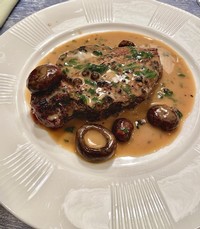 Now let us draw the shared experience a little closer. You are really craving a bright and refreshing Gruner Veltliner, but the "Steak Diane" on the menu just looks soooooo good. So? Order both! These are not what one would consider a perfect food & wine pairing but who cares. Take a bite of the Steak Diane and savor the tender filet mignon bathed in a delectable mushroom, cream dijon mustard and cognac sauce that simply tantalizes the taste buds. Enjoy the moment. Then take a sip of the brisk, bright cool and refreshing Gruner Veltliner. The mouthwatering soft acidity tingles across the palate, clears all other flavors from its path, and leaves your palate brighter. Now another bite of food promises the same smile inducing pleasure that the first bite did.
Now let us draw the shared experience a little closer. You are really craving a bright and refreshing Gruner Veltliner, but the "Steak Diane" on the menu just looks soooooo good. So? Order both! These are not what one would consider a perfect food & wine pairing but who cares. Take a bite of the Steak Diane and savor the tender filet mignon bathed in a delectable mushroom, cream dijon mustard and cognac sauce that simply tantalizes the taste buds. Enjoy the moment. Then take a sip of the brisk, bright cool and refreshing Gruner Veltliner. The mouthwatering soft acidity tingles across the palate, clears all other flavors from its path, and leaves your palate brighter. Now another bite of food promises the same smile inducing pleasure that the first bite did.
Do not rush, do not force these two together, savor each for its own glorious merits. You have just discovered the art of enjoying two things at the same time! They may not necessarily enhance each other, but they clearly define two pleasurable experiences.

Now the holy grail. There is something quite exquisite when the food and wine experience transcends the sum of its parts, where each element elevates the other in turn until you are unable to discern which makes the other better. This is not a science, it is not an art, it is an experience.
Start with the Ektimo 2019 Estate "Mount Eden Clone" Pinot Noir which is a more robust take on Pinot Noir, lithe and luscious yet with more body and substance, focused and precise. It rewards the more sophisticated palate with a veritable feast for the senses that will tantalize your palate and capture your imagination. Deeper in color, richer in aroma and more concentrated on the palate, Crimson Passion Cherry, pomegranate and Thundercloud Plum flecked with savory notes and supple tannins as smooth as satin sheets. The veritable kaleidoscope of flavors will glide across your palate like the viennese waltz that doesn't want to end.
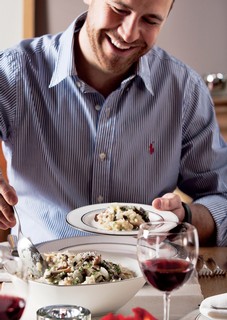 Now add a savory "Wild Mushroom Risotto". Place the two next to each other and allow the aromas to intermingle, then raise the glass and allow the aroma of the wine to dominate. They are connected. The interplay teases the senses, each beckoning to be sampled first.
Now add a savory "Wild Mushroom Risotto". Place the two next to each other and allow the aromas to intermingle, then raise the glass and allow the aroma of the wine to dominate. They are connected. The interplay teases the senses, each beckoning to be sampled first.
The wine wins. As the complex array of flavors caresses your plalate it invigorates your tastebuds and the brisk elements become animated in pleasing fashion. The savory perfume of the gourmet dish draws you in. At first bite the forest is embraces in a light mist with tones of chanterelle, porcini, morel & truffle. The flavors bring forth an echo of sweet oak, with herbal tones that flicker back and forth. Another sip of the wine and the forest flickers with light as the berry notes now tickle the richer tones to life. With each successive sip and bite, the complex interplay resonates and harmonizes until the two create a third distinct and pleasing effect that joins the dance.
Enjoy the wine, enjoy the food, enjoy the food & wine, but above all enjoy!
Winery Custom Crush
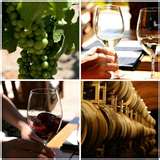 Have you ever wondered how newcomers break into the industry? Have you ever thought that you might want to start making some wine of your own? Have you ever thought you might want wines of your own with customized messaging directly on the label?
Have you ever wondered how newcomers break into the industry? Have you ever thought that you might want to start making some wine of your own? Have you ever thought you might want wines of your own with customized messaging directly on the label?
Well, here at Ektimo Winery all these possibilities can become reality.
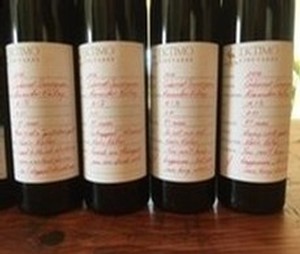 As a select, boutique family owned operation our Estate Wines represent a tiny amount of our production capacity. Some of our more exclusive single clone wines are limited to a mere 50 cases and are sold out in advance at the winery. However our facilitiy at full capacity is permitted to produce up to 40,000 cases and our opwn bottling line can package up to 2,000 cases per day..
As a select, boutique family owned operation our Estate Wines represent a tiny amount of our production capacity. Some of our more exclusive single clone wines are limited to a mere 50 cases and are sold out in advance at the winery. However our facilitiy at full capacity is permitted to produce up to 40,000 cases and our opwn bottling line can package up to 2,000 cases per day..
So rather than have an abundance of empty space and unexplored capacity, we enable many unique producers to explore their dreams without the substantial capital investments. Start small, dream BIG.
 How this works depends on the client. If you were to walk into the winery, speak with our winemaker and simply decide "I want to make 50 cases of Penelope Pitstop Pinot Noir".... it can happen.... for a price. Now if you have the same discussion, but qualify the request with "but I will be bringing my own grapes from the Petaluma Gap, and I will supply my own barrels" that is is a different fee. If you choose to make your own wine and work with our winemaker as a consultant, that is a different fee. There is a formula designed for the varied levels of involvement. Our knowledgable staff can guide you on the right path, from licensing and label apprval, to quality control and wine repairs.
How this works depends on the client. If you were to walk into the winery, speak with our winemaker and simply decide "I want to make 50 cases of Penelope Pitstop Pinot Noir".... it can happen.... for a price. Now if you have the same discussion, but qualify the request with "but I will be bringing my own grapes from the Petaluma Gap, and I will supply my own barrels" that is is a different fee. If you choose to make your own wine and work with our winemaker as a consultant, that is a different fee. There is a formula designed for the varied levels of involvement. Our knowledgable staff can guide you on the right path, from licensing and label apprval, to quality control and wine repairs.
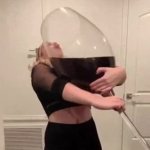 But be warned, once you are bitten by the winemaking bug it can quickly become an obsession. It also is worth noting that making wine is easy, anyone can do it. Making good wine? That is a little more complex. Making great wine? That is a great confluence of nature, science and art. Many a small fortune has been made in the wine industry.... by starting with a large fortune. Capturing lightning in a bottle? A lot less common.
But be warned, once you are bitten by the winemaking bug it can quickly become an obsession. It also is worth noting that making wine is easy, anyone can do it. Making good wine? That is a little more complex. Making great wine? That is a great confluence of nature, science and art. Many a small fortune has been made in the wine industry.... by starting with a large fortune. Capturing lightning in a bottle? A lot less common.
So, if you are now intrigued and ready to take your first baby steps on the road to winedom, you just might have discovered the perfect place to start your journey.